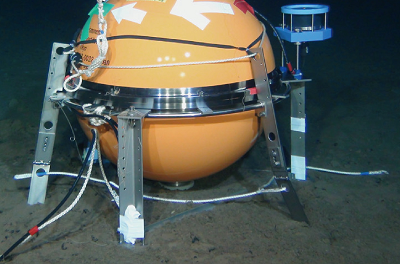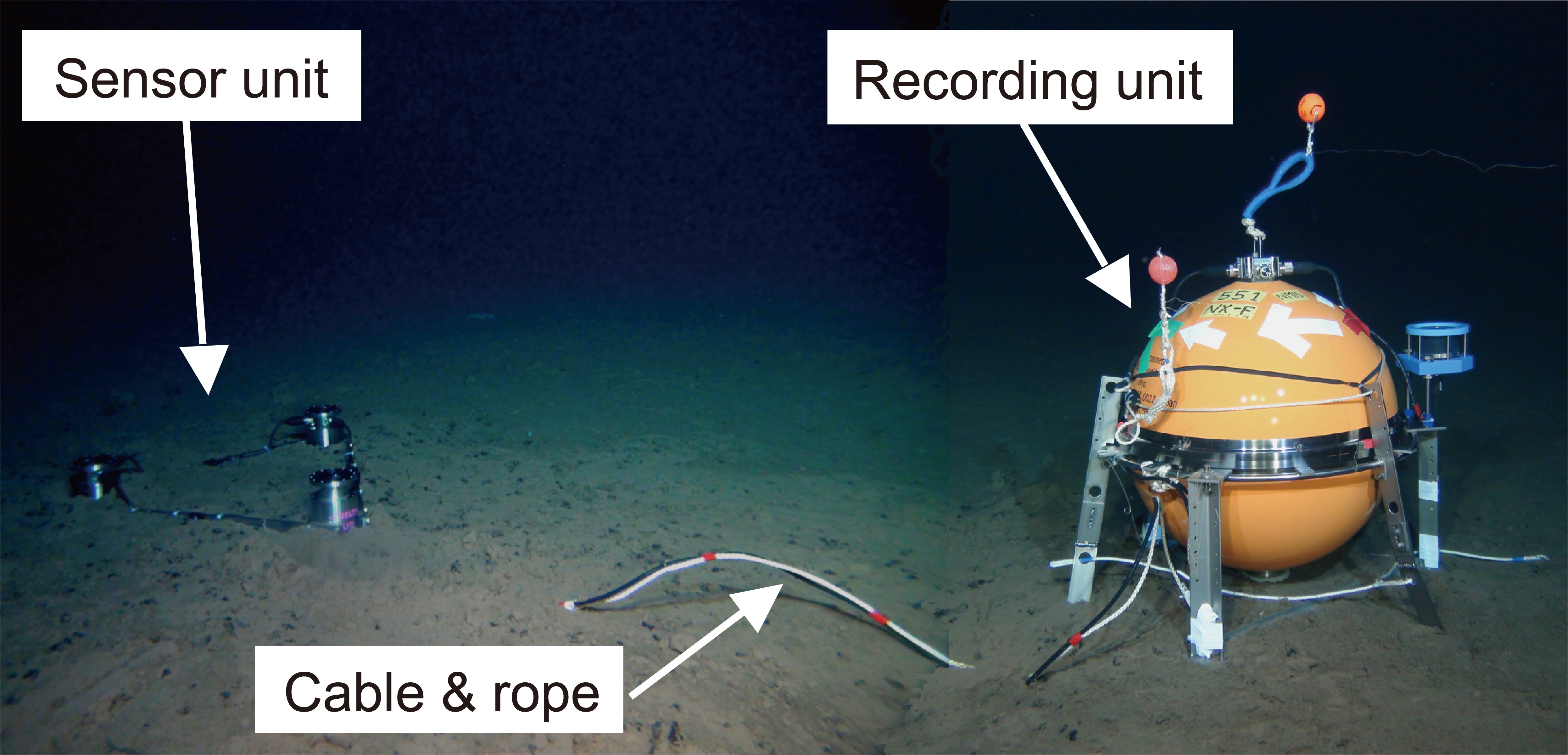Team creates new technology to monitor Earth's state below seafloor Method monitors "softness" of oceanic asthenosphere


The ocean-bottom seismometer system is deployed on the seafloor. The sensor unit is embedded into the ocean floor to improve stability. To minimize the sensor unit from picking up noise generated by the recording unit, the two modules are separated.
© 2019 Nozomu Takeuchi.
Researchers at the University of Tokyo’s Earthquake Research Institute and collaborators have developed their own technology for seismic measurements on the seafloor and succeeded for the first time in conducting observations, at the original position on the ocean floor, of the differences between the ocean lithosphere and asthenosphere layers of Earth's mantle.
Below the surface crust of the Earth, both on land and underwater, there is rigid bedrock called the lithosphere. In models of Earth's mantle, the hard lithosphere moves on top of the softer asthenosphere. Earth science researchers still do not know why the asthenosphere is softer than the lithosphere, and, because of the difficulty of collecting data so far underwater, there have been limited number of ways to directly measure the asthenosphere.
The research group led by Associate Professor Nozomu Takeuchi, and Professors Hitoshi Kawakatsu and Hajime Shiobara designed what is often referred to as the Normal Oceanic Mantle Project to develop its own technology of long-term seafloor observation and achieved in situ observations of material properties of the asthenosphere. The researchers focused on one measure of rock softness, called seismic attenuation, and succeeded in an accurate comparison of softness between the lithosphere and the asthenosphere using their own technique to simulate complex seismic-wave propagations. These measurement technologies make it possible to directly compare results of laboratory rock experiments and direct measurements of the Earth, providing a new way to monitor the state of the asthenosphere.
If detailed causes and conditions that soften rocks are revealed in the near future, it may be possible to identify what causes the softness of the asthenosphere.
"The importance of seismic measurements in oceanic regions is widely recognized, but the research community has struggled to collect accurate measurements," says Takeuchi. He continues, "Members of the Ocean Hemisphere Research Center at the Earthquake Research Institute played central roles in this collaborative project and our team overcame difficulties by relying on our diverse areas of expertise. We have established a strong joint development system and we look forward to continuing our group's interdisciplinary, collaborative research projects in the future."
Papers
N. Takeuchi, H. Kawakatsu, H. Shiobara, T. Isse, H. Sugioka, A. Ito, & H. Utada , "Determination of Intrinsic Attenuation in the Oceanic Lithosphere-Asthenosphere System," Science: December 22, 2017, doi:10.1126/science.aao3508.
Link (Publication )
)
Related links
- Earthquake Research Institute

- Ocean Hemisphere Research Center, Earthquake Research Institute

- Laboratory of Nozomu Takeuchi, Ocean Hemisphere Research Center, Earthquake Research Institute

- Ocean Hemisphere Project Data Management Center, Earthquake Research Institute






